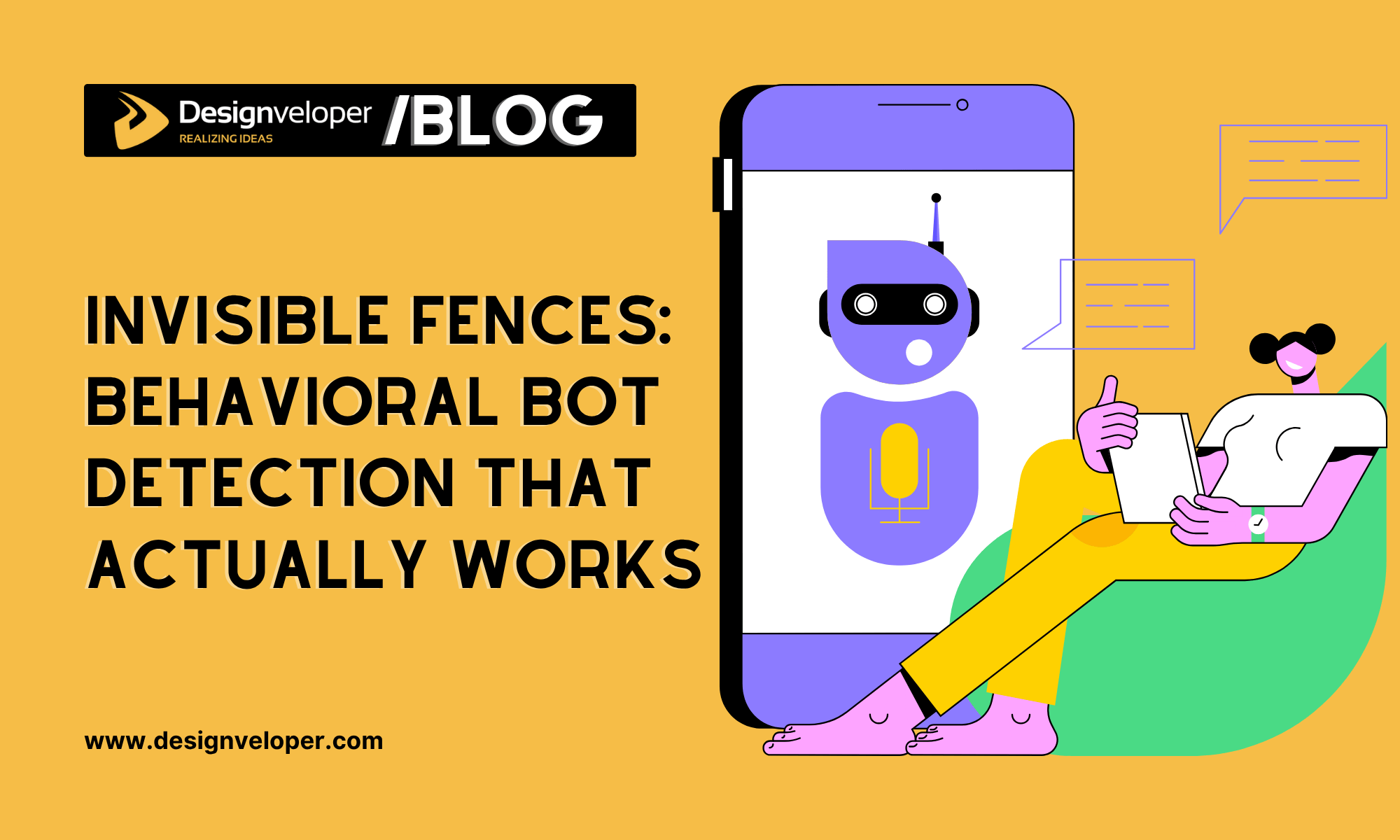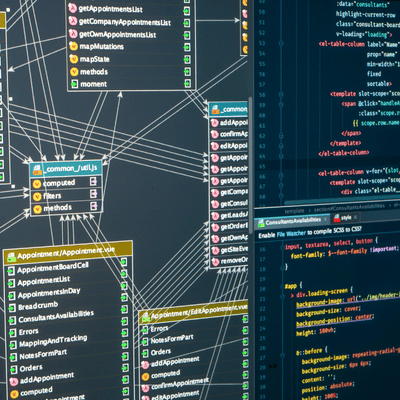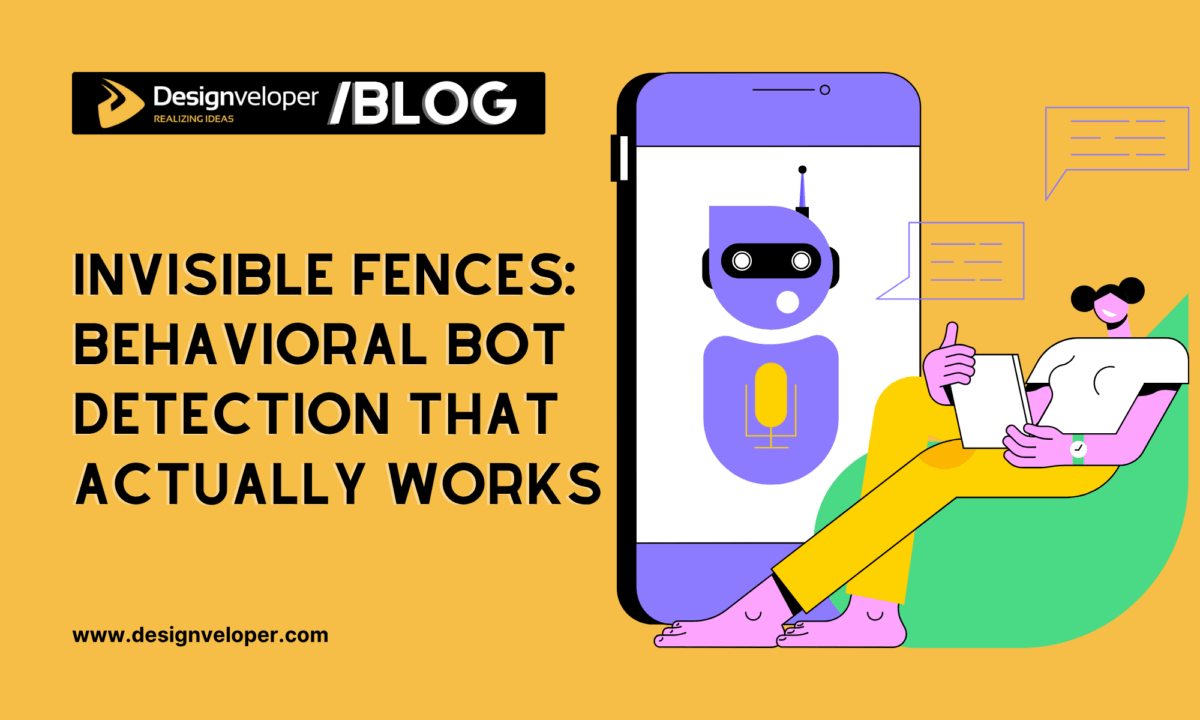
You stroll through a favorite online store, gliding from product gallery to payment page without a single road-block. No squint-inducing CAPTCHA, no odd one-out quiz about traffic lights—just a seamless journey that feels as natural as breathing. Yet while you admire high-resolution photos or fill your cart, something else keeps watch. A silent network listens for hurried clicks, uniform scrolls, and uncanny keystroke rhythms, distinguishing living visitors from code. Like a tracker reading footprints in the snow, it spots patterns the naked eye would miss and blocks malicious automation before anyone raises an eyebrow.
This article pulls back the curtain on that invisible guardian. You will learn why static IP blocklists and honeypot fields crumble against modern, shape-shifting bots; how behavioral fingerprinting assembles dozens of micro-signals into robust profiles; and how a layered “fence” can repel intruders without punishing genuine users. If you plan to tighten security without staining the user experience, the following blueprint will give you a running start.
The New Bot Landscape
Modern bots have evolved from blunt instruments into sly intruders that mimic human behavior with unsettling accuracy. They throttle their request rates, randomize HTTP headers, and even sprinkle in fake mouse moves so they appear harmless at first glance. Cloud providers have responded by deploying a new tool blocking evasive AI bots, tightening the perimeter before those scripts ever load a single pixel.

When newcomers search online for what is an internet bot, they quickly arrive at countless definitions but few practical answers. The danger escalates because fraud rings treat your static rules as a syllabus. Once they study it, they graduate—then bypass it. Relying on honeypots or plain CAPTCHA is like securing your front door yet leaving the windows wide open.
A more resilient approach watches what a visitor actually does. How long do they hover over a button? Do they scroll in bursts or glide steadily? Is their cursor speed oddly uniform, like a conveyor belt? Such behavioral breadcrumbs are almost impossible to fake consistently. Armed with these clues, you can herd unwanted automation away without even letting genuine users know there was a threat at all.
Anatomy of a Behavioral Fingerprint
Once an anonymous visitor lands on your page, the clock starts ticking. Every millisecond yields data: the gap between DOM ready and first interaction, the angular variation of pointer movement, even how the viewport resizes when a user flips their phone. Collect those traces into a time-series bundle, and you have the beginnings of a behavioral fingerprint.

At its core, the fingerprint carries three pillars:
- Temporal cadence. Few humans click instantly after render; most hover, read, and then act. Bots often misjudge this natural lag or reproduce it too perfectly.
- Spatial motion. Even a seasoned gamer guiding a mouse produces jitter. Headless browsers, by contrast, default to mathematically ideal vectors.
- Entropy across events. Real sessions pulsate—scrolling faster on long articles, slowing near forms. Automation stays eerily flat, revealing its synthetic heartbeat.
After amassing enough sessions, you feed these metrics into high-cardinality indexes keyed by session IDs or device hashes. Patterns soon appear: clusters with identical pointer-path curvature, bursts of requests originating from mixed proxy pools but exhibiting carbon-copy behavior, or focus-change rhythms that align with Selenium defaults. Law-enforcement’s recent global takedown of stealthy infostealers illustrates how uniform automation collapses once nuanced behavior flags it.
A short detour helps clarify the value of spatial cues.
Spatial rhythm and cursor cadence
Imagine the rhythm section of a song. The drummer sets tempo but also leaves micro-variations—tiny off-beats adding life. Your visitor’s cursor behaves similarly, darting, hesitating, and accelerating in organic fits. Record the slope and angle every few pixels, then chart variance; sessions that look like perfect sine waves almost always belong to scripts, not fingers.
Building the Invisible Fence: Layered Defense
Collecting metrics is only half the mission; deciding what to do with them, in milliseconds, completes the circle. The most resilient setups apply a tiered response:
- Observation tier: First pages load unhindered while the system compiles an initial fingerprint.
- Light challenge tier: Medium-risk sessions receive a hidden JavaScript proof-of-work or a background API call that standard browsers handle instantly.
- Hard challenge tier: High-risk actors hit a full CAPTCHA or outright block.

Because AI agents imitating humans at login now glide through surface-level checks, your calibrated defense ladder must escalate responses in real time. This choreography keeps genuine users happy and attackers guessing. Rotate entropy thresholds monthly, shuffle DOM element IDs weekly, and randomize minor UI placements daily. Each tweak costs adversaries reverse-engineering time while costing your engineers little more than a deployment.
Audit logs should record every decision: risk score, triggered rule set, chosen countermeasure, and outcome. Feed that data back into the training pipeline to spot blind spots—say, if an unchallenged cluster later proves malicious—or false positives draining conversions.
Micro-Interactions Worth Measuring
With countless client-side signals available, which should you prioritize? The following short list balances collection overhead and forensic value:
- Scroll acceleration patterns, especially sudden velocity resets mid-page
- Time-to-first-click relative to Largest Contentful Paint on individual devices
- Sequences of mouse-out and focus-in events across embedded iframes
- Pointer-angle entropy within input fields, revealing scripted straight-line entries
Treat each metric as a puzzle piece. A bot may randomize scroll intervals but still fire pixel-perfect clicks; another may script sloppy pointer trails yet forget to vary dwell time. By correlating cross-feature entropy, you reveal inconsistencies impossible for a one-off heuristic to catch.
Maintain a sliding window for each session so you can observe evolution. Humans often speed up as familiarity grows, while bots remain monotonous or change in sudden, unnatural jumps. Plotting these trajectories turns raw numbers into signatures you can act on confidently.
Training the Detector: Data and Adaptation
Behavioral defenses succeed only when the model behind them evolves alongside threats. Begin by exporting raw event streams into a columnar analytics store optimized for high cardinality. From there, run clustering jobs to outline “normal” behavior for your traffic mix—desktop gamers, mobile shoppers, tablet readers—so that legitimate diversity isn’t mislabeled.
Start simple: a gradient-boosted tree or naïve Bayesian classifier often suffices when features carry strong signal. Balance datasets by mixing verified human sessions with labeled attacks harvested from decoy pages or synthetic frameworks such as Puppeteer and Playwright. Evaluate using precision-recall, not accuracy, because false positives are costlier than occasional misses.
High-performing teams chasing frictionless fraud detection through behavioral biometrics refresh their models weekly, discarding stale features before attackers learn to spoof them. Monitor feature importance each retrain cycle; if one metric suddenly rules the roost, adversaries may have discovered how to skew your learning surface.
Teaching the model to forget
Storing every session forever is a liability. Behaviors shift as browsers update and user habits morph. Implement a decay policy—say, 90-day half-life—so the model forgets patterns no longer representative of real visitors. Archive raw logs to cold storage for forensic retrieval, but keep your active dataset nimble, current, and resilient.
Balancing Security and User Experience
No matter how accurate your risk engine, the human side remains non-negotiable. Each added checkpoint is a potential conversion killer, so you must meter friction like a chef seasoning soup: enough to protect, never enough to overwhelm.
Progressive disclosure works best. Sessions below a risk threshold experience the site exactly as designed. Those hovering in the ambiguous middle might face an invisible JavaScript computation only if they attempt sensitive actions like posting a comment or initiating a payment. High-risk scores earn visible challenges immediately. Yet even with these safeguards, major platforms confess they remain advertisers still haunted by fake users, a grim reminder that false negatives drain real budgets just as surely as false positives do.
A real-user-monitoring dashboard should track completion times, bounce rates, and abandonment funnels after every rule change. If checkout duration spikes or newsletter sign-ups plummet, roll back the latest tweak and re-examine the data. Picture a revolving door that spins freely at everyday speed yet locks when shoved at breakneck pace. Your defense should feel like that door—effortless for genuine shoppers, immovable for automated smash-and-grabs.
Conclusion
Behavioral analytics transform bot control from a blunt hammer into a finely tuned instrument. By watching timing quirks, scroll variations, and cursor cadences—signals too nuanced for copy-and-paste scripts—you erect an unseen barrier that adapts in real time. Visitors enjoy a frictionless experience, unaware that under the hood a live orchestra of metrics, models, and tiered challenges filters friend from foe.
Keep your data streams fresh, your model iterative, and your response ladder flexible. Do that, and the smart bots circling your perimeter will find themselves bouncing off an invisible fence they can’t quite map, let alone cross.






Read more topics





























































